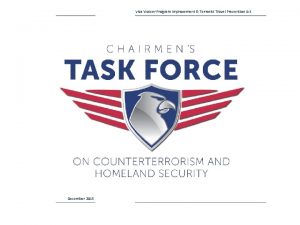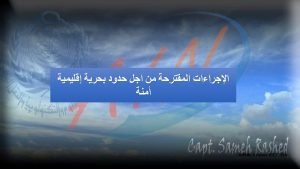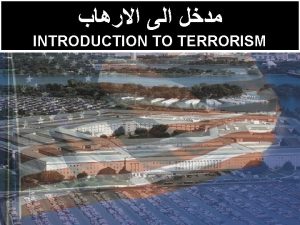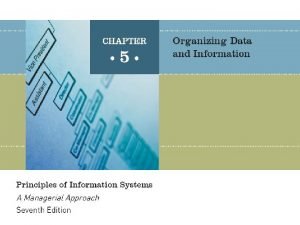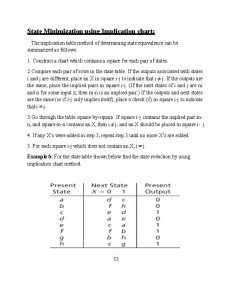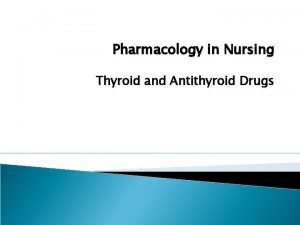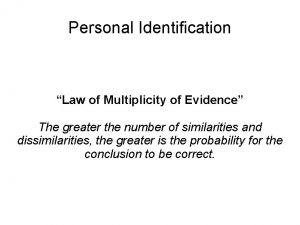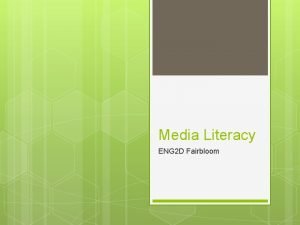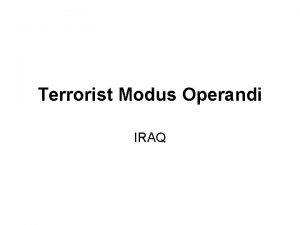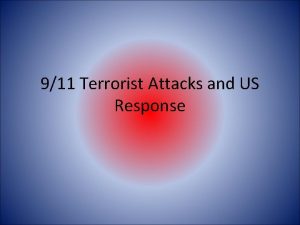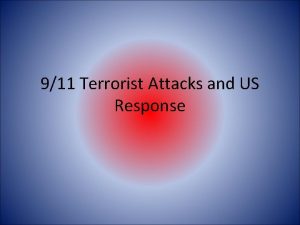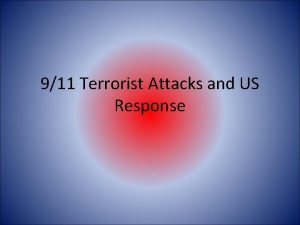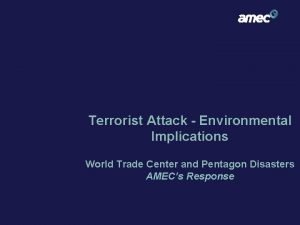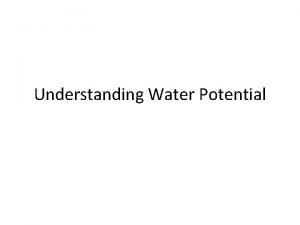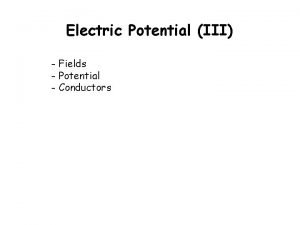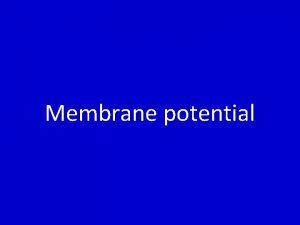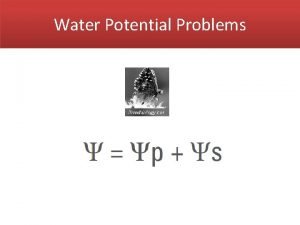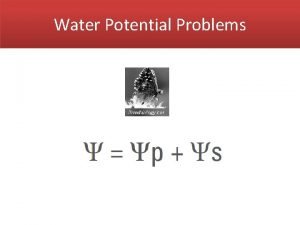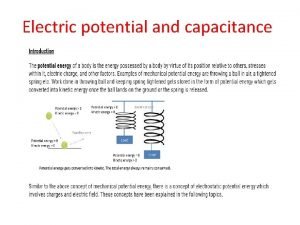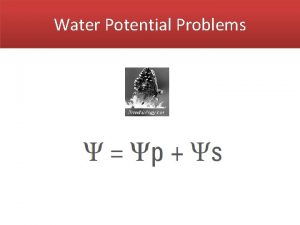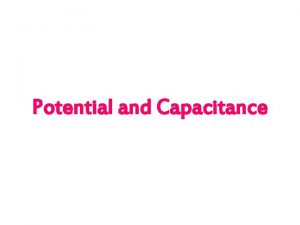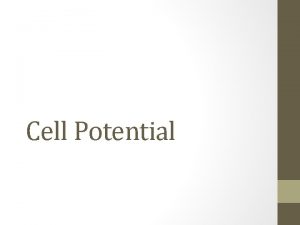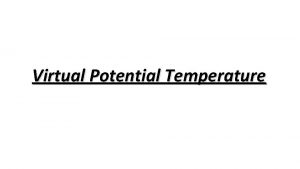ANALYSIS ON THE POTENTIAL IMPLICATIONS OF A TERRORIST

































- Slides: 33

ANALYSIS ON THE POTENTIAL IMPLICATIONS OF A TERRORIST ATTACK AT U. S. SPENT NUCLEAR FUEL STORAGE FACILITIES Derek Favret, Michael Stabin, Frank Parker, Jim Clarke and David Kosson

Introduction September 11, 2001 Nuclear Industry targeted Successful attack would potentially cause devastating release of radioactive material (Source: http: //en. wikipedia. org/wiki/Image: WTC_attack_9 -11. jpg)

Headlines “…could cause contamination problems significantly worse than those from Chernobyl” “…could release up to 20 times the 137 Cs released from Chernobyl” “…disaster of catastrophic proportions”

Background Circles represent sites with one reactor, squares represent plants with two, and stars represent three. Open symbols represent sites with at least one shutdown reactor (Source: Alvarez, et al. , Reducing the Hazards from Stored Spent Power. Reactor Fuel in the United States, 2003).

Light Water Reactors (Source: National Academies, “Safety and Security of Commercial Spent Nuclear Fuel Storage, 2006)

Spent Fuel Pool (SFP) (Source: NRC, Spent Fuel Pool, 2003) “Pool within Pool” Building: Industrial-type design Steel superstructure above pool Pool depth: 12 -15 m Pool volume: ~4000 m 3 No drains or low-level pathways

Probability of Successful Attack UNREALISTIC THREAT “Robust construction and stringent security requirements” “Severe consequences and unpredictability of terrorists” “Critics overestimate consequences and underestimate ability to cool fuel in damaged pool” National Academies: n “difficult but possible” n “additional analysis needed”

Scenario Loss of Coolant Event – “Zirconium Fire” “Realistic” worst-case analysis SFP located in rural and urban areas


Dispersion Modeling Defense Threat Reduction Agency CBRNE modeling tool Gaussian Puff model “SCIPUFF” Joined with RASCAL and climatology database for Nuclear Reactor modeling

HPAC Incident Models Chemical/Biological Facility Damage Chemical/Biological Weapon Industrial Facility Industrial Transportation Nuclear Weapon Accident/Incident Radiological Weapon Incident Missile Intercept

HPAC High-resolution weather, terrain, and land cover data Surface and Upper air climatology Historical, real-time or forecast weather options

HPAC Parameters Spent Fuel Release n n Zirconium Fire Fuel Cladding Failure Worst-case settings Historical Weather

Parameters (cont. ) Release Height – effective release height Buoyancy n n n Vertical Exhaust Velocity Temperature above Ambient (20 o. C) Exhaust Area

RESRAD Argonne National Lab Calculates site-specific residual radiation levels, lifetime dose and excess lifetime cancer risks to chronically exposed onsite residents Pathway Analysis

RESRAD: Pathway Analysis

RESRAD Scenarios Pathway Resident Farmer Suburban Resident Industrial Worker Recreationist External gamma exposure Yes Yes Inhalation of dust Yes Yes Radon inhalation Yes Yes Ingestion of plant foods Yes No No Ingestion of meat Yes No No Yes Ingestion of milk Yes No No No Ingestion of fish Yes No No Yes Ingestion of soil Yes Yes Ingestion of water Yes No No No

RESRAD Parameters Default parameters Radionuclides determined by HPAC Soil density =1. 5 g cm-3 Contamination depth = 0. 1 m

RESULTS

HPAC RURAL SCENARIO URBAN SCENARIO April, May & December yielded areas of contamination ~ 560 km 2 (0. 037 GBq m-2 contour) January yielded area of contamination ~ 202 km 2 (0. 037 GBq m-2 contour) April yielded area of contamination ~ 55 km 2 (0. 37 GBq m-2 contour) January yielded area of contamination ~ 14 km 2 (0. 37 GBq m-2 contour) Majority of plumes released in generally Northern direction Majority of plumes released in generally Northern. Eastern direction April represents worst-case dispersion January represents worstcase dispersion

Rural Scenario Ground Deposition N 37 GBq m-2 3. 7 GBq m-2 0. 37 GBq m-2 0. 037 GBq m-2 Annual Dose Rate: 70 Sv y-1 700 m. Sv y-1 70 m. Sv y-1 N Urban Scenario

HPAC Total Activity Released = 4. 8 E+08 GBq (13 MCi) Radionuclides contributing to ground deposition: n 137 Cs = 33. 08% n 134 Cs = 17. 69% n 90 Sr = 1. 54% n 106 Ru = 0. 26% n 125 Sb = 0. 22% n 144 Ce = 0. 08% n 147 Pm = 0. 02% NOTE: (Noble Gases = 12. 31%, external dose contribution only)

Activity Release (GBq): HPAC vs. Chernobyl HPAC Scenarios (Mean) Chernobyl 137 Cs = 1. 48 E+08 137 Cs = 8. 50 E+07 134 Cs = 7. 96 E+07 134 Cs = 5. 40 E+07 90 Sr = 7. 03 E+06 90 Sr = 1. 00 E+07

RESRAD: Dose Rural Scenario: 0. 37 GBq m-2 (10 m. Ci m-2) contour

RESRAD: Dose Urban Scenario: 0. 37 GBq m-2 (10 m. Ci m-2) contour

Protective Action Guidelines (PAG) Phase Protective Action PAG Early - Limit Emergency Worker Exposure 0. 05 Sv (5 rem) - Sheltering of Public 0. 01 -0. 05 Sv (1 -5 rem) projected dose - Evacuation of Public 0. 01 -0. 05 Sv (1 -5 rem) projected dose Intermediate - Limit Worker Exposure 0. 05 Sv (5 rem) y-1 - Relocation of General Public 0. 02 Sv (2 rem) projected dose first year Late - Final Cleanup Actions based on “Optimization” Source: Federal Registrar, Vol 71, No. 1, 3 Jan 06

RESRAD: Dose Rural Scenario: 0. 037 GBq m-2 (1 m. Ci m-2) contour

RESRAD: Dose Urban Scenario: 0. 037 GBq m-2 (1 m. Ci m-2) contour

RESRAD: 137 Cs contributions to Dose Rural Scenario: 0. 037 GBq m-2 (1 m. Ci m-2) contour

RESRAD: 90 Sr contributions to Dose Rural Scenario: 0. 037 GBq m-2 (1 m. Ci m-2) contour

Headlines in Review “…could cause contamination problems significantly worse than those from Chernobyl” “…could release up to 20 times the 137 Cs released from Chernobyl” “…disaster of catastrophic proportions”

Conclusions HPAC analysis of worst-case incident results in contamination levels in general agreement with Chernobyl. RESRAD analysis shows potential for acute effects are unlikely. Dose levels in the worst case analysis are high in some zones, showing that restrictions on worker access and temporary relocation of some populations will be necessary. Although significant, an incident that results in a zirconium fire at a SFP may not be as catastrophic as suggested.

For More Information: HPAC n http: //www. dtra. mil/toolbox/directorates/td/programs/ acec/hpac. cfm RESRAD n http: //web. ead. anl. gov/resrad/home 2
 The terrorist he watches
The terrorist he watches Wie wird man terrorist
Wie wird man terrorist Travel prevention act of 2015
Travel prevention act of 2015 Terrorist
Terrorist Terrorism
Terrorism How to find pressure potential
How to find pressure potential Negative water potential
Negative water potential How to calculate solute potential
How to calculate solute potential Graded potential vs action potential
Graded potential vs action potential Graded potentials
Graded potentials Graded vs action potential
Graded vs action potential Action potential definition
Action potential definition Refractory period neuron
Refractory period neuron How to find pressure potential
How to find pressure potential Source of bioelectric potential isin nature.
Source of bioelectric potential isin nature. Hypopolarization
Hypopolarization End-plate potential vs action potential
End-plate potential vs action potential Action potential resting potential
Action potential resting potential Action potential resting potential
Action potential resting potential Difference between sales potential and market potential
Difference between sales potential and market potential Define electric potential and potential difference.
Define electric potential and potential difference. Volts to ev
Volts to ev Electric potential
Electric potential Potential of conductor
Potential of conductor Electric potential energy
Electric potential energy Pe q
Pe q Electrical potential
Electrical potential Database approach to data management
Database approach to data management Social constructivist meaning
Social constructivist meaning State reduction using implication table
State reduction using implication table Nursing implications for synthroid
Nursing implications for synthroid Law of multiplicity of evidence in identification example
Law of multiplicity of evidence in identification example Media have commercial implications
Media have commercial implications Marketing implications
Marketing implications


